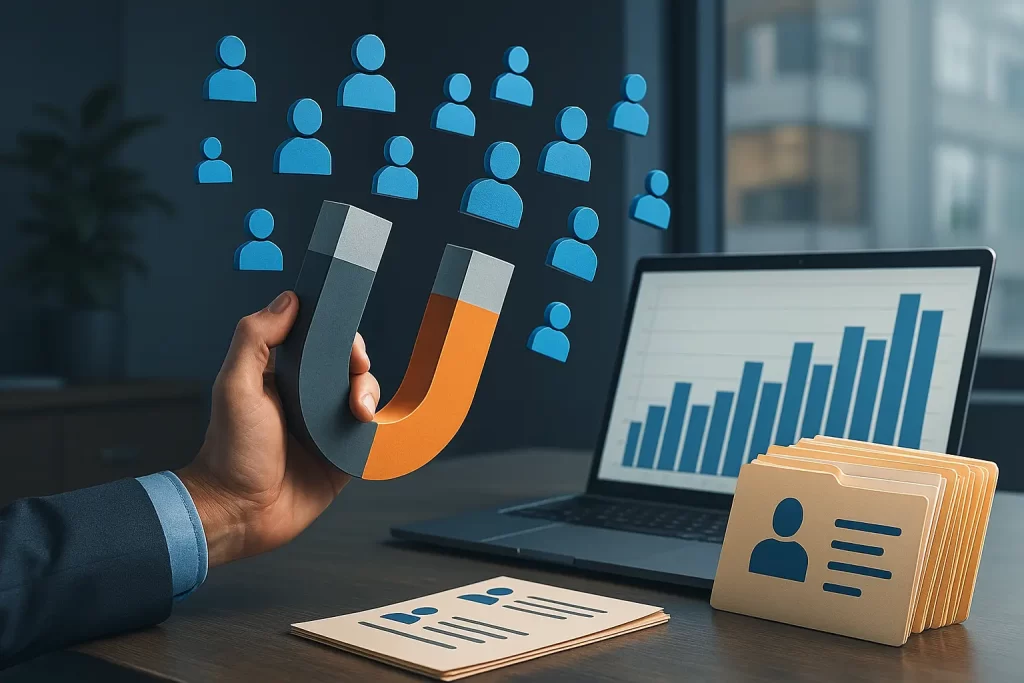Most event organizers believe their biggest challenge is crafting the perfect invitation. They’re wrong. Event organizers face a 21-30% average open rate for cold emails, with only 2.1-3% of recipients clicking links in event invitations according to EmailToolTester. Yet some campaigns achieve response rates as high as 17% in regions like Ireland, while personalization drives 81.5% higher click-through rates according to ProfitOutreach.
The difference isn’t in the message—it’s in the methodology. Smart organizers understand that successful cold outreach for events requires precise timing, hyper-targeted personalization, and systematic follow-up sequences that transform ignored invites into confirmed attendees. I’ve analyzed the data behind high-performing event campaigns to reveal the specific tactics that separate packed venues from empty rooms.
Contents
- 1 The Personalization Formula That Boosts Event RSVPs by 81.5%
- 2 Crafting Subject Lines and Email Architecture That Cut Through the Noise
- 3 The Science of Timing: When to Send Cold Event Invitations
- 4 Essential Tools and Automation Workflows for Event Cold Outreach
- 5 Tracking Performance and Post-Outreach Follow-Up Strategies
- 6 FAQ
- 7 Sources
Key Takeaways
- Personalized emails increase response rates by 32.7% and open rates by 50% compared to generic invitations
- Monday mornings (5-8 AM) yield the highest reply rates at 2.3% for cold event outreach
- Subject lines with 36-50 characters drive 24.6% higher response rates than longer alternatives
- Send invitations 10-14 days pre-event with 3-8 follow-ups spaced 2-3 days apart for optimal results
- Track 21-30% open rates and 11%+ click-through rates as performance benchmarks
The Personalization Formula That Boosts Event RSVPs by 81.5%
Generic event invitations get deleted. Personalized emails increase response rates by 32.7% and open rates by 50% according to ProfitOutreach. The difference lies in hyper-targeted research that makes recipients feel individually selected rather than mass-marketed.
Research-Driven Personalization Tactics
Start with LinkedIn intelligence gathering. Reference a prospect’s recent post, company achievement, or industry insight. For example: “Loved your take on AI trends—our event explores this further.” This approach transforms cold outreach into warm conversation.
Including the recipient’s name and company in subject lines improves engagement by 26% according to HubSpot. But go deeper. ProfitOutreach enables auto-generated personalized content that scales individual touches across large prospect lists.

Regional Adaptation Strategies
Geography matters more than most organizers realize. APAC regions respond best to 13.4% CTR offers, while EU audiences prefer case studies according to GrowthList. Cold outreach campaigns achieve response rates as high as 17% in regions like Ireland, but only when messaging aligns with local preferences.
Create region-specific templates that reflect cultural communication styles. European prospects value detailed case studies and proven outcomes. Asian markets respond to exclusive offers and limited-time opportunities. American audiences prefer direct value propositions with clear ROI statements.
Template Framework That Converts
Structure personalized invitations using this proven formula:
– Subject: [First Name], Your Insight on [Topic] Would Elevate Our Panel
– Hook: Reference their specific expertise or recent achievement
– Value: Connect their interests to event content
– Social proof: Mention other confirmed attendees in their industry
– Clear CTA: Direct link to registration or calendar booking
This personalization approach scales without sacrificing individual relevance.

Crafting Subject Lines and Email Architecture That Cut Through the Noise
Your subject line determines whether prospects open or ignore your invitation. Subject lines with 36-50 characters drive 24.6% higher responses than longer alternatives according to Klenty.
High-Performance Subject Line Examples
Urgency-driven lines like “Last Chance to Join [Event]” lift opens by 11% according to HubSpot. But avoid generic networking language. “Networking Opportunity” performs poorly compared to specific value propositions.
Test these proven formats:
– “Only 24 Hours Left: [Industry] Leaders Confirmed”
– “[First Name], Your [Company] Insight Needed at [Event]”
– “Join [Influencer Name] and 200+ [Industry] Executives”
Emotional triggers matter. A/B testing between FOMO and curiosity-driven subject lines using tools like Woodpecker can achieve 40% performance lifts according to Doplac.
Email Body Architecture
Structure your email body using this three-part framework:
Hook with statistics: “97% of 2024 attendees reported new partnerships” immediately establishes value. Social proof follows: “Join [Influencer Name] and [Company]’s CEO” creates aspiration and exclusivity.
End with clear action: “Secure your seat → [Calendly Link]” removes friction from the RSVP process. EventX data shows direct calendar links increase conversion rates compared to multi-step registration forms.
Keep paragraphs short and scannable. Busy executives decide within seconds whether to engage or delete.

The Science of Timing: When to Send Cold Event Invitations
Timing can double your response rates. Monday mornings (5-8 AM) yield 2.3% reply rates, the highest for cold emails according to EmailToolTester. Tuesday emails achieve 2.4% click-through rates, marginally outperforming other weekdays.
Optimal Send Windows
Send invitations 10-14 days pre-event to maximize registration windows while avoiding list fatigue according to Digistorms. This timeframe allows prospects to clear calendars without feeling rushed.
Avoid Friday afternoons and Sunday evenings when engagement drops significantly. Mid-week sends (Tuesday-Thursday) between 8-10 AM capture attention during peak email checking periods.
Follow-Up Sequence Strategy
Send 3-8 follow-ups spaced 2-3 days apart, with diminishing returns after the 5th attempt according to GMass. Structure your sequence strategically:
Day 1: Initial invite with exclusive positioning (“Limited Seats for [Industry] Leaders”)
Day 3: Value-add reminder (“Join 200+ Executives Already Registered”)
Day 5: Urgency trigger (“24-Hour Early-Bird Discount Expires”)
Day 8: Final attempt with alternative engagement (“Can’t attend? Here’s what you’ll miss”)
This systematic approach maintains engagement without appearing desperate.
Cadence Automation Tools
Lemlist automates follow-up sequences while maintaining personalization. HubSpot enables A/B testing of send times across different prospect segments. Manual follow-ups don’t scale—invest in automation that preserves individual touches.

Essential Tools and Automation Workflows for Event Cold Outreach
The right tools separate amateur outreach from professional campaigns. Lemlist excels at personalized images and videos within emails, creating visual engagement that text alone can’t achieve.
Platform-Specific Recommendations
Mailshake handles multi-channel outreach across email and LinkedIn, essential for reaching busy executives who ignore email but check social media. GMass provides HubSpot-integrated analytics for tracking opens and clicks according to Inframail.
ActiveCampaign automates RSVP confirmations by sending event details and calendar invites immediately after registration. This reduces no-shows by maintaining engagement between signup and event date.
Testing and Optimization Tools
Woodpecker’s A/B testing tools enable emotional trigger testing between FOMO and curiosity-driven approaches. Campaigns with ongoing testing see 40% performance lifts according to Doplac.
ProfitOutreach generates personalized content at scale, solving the biggest challenge in event outreach: maintaining individual relevance across large prospect lists.
Integration Workflows
Connect Typeform with email automation for seamless registration tracking. Integrated systems capture more data about attendee preferences and enable targeted pre-event communication.
Set up automated reminder sequences 48 hours and 24 hours before events using ActiveCampaign. This comprehensive approach reduces no-show rates significantly.
Tracking Performance and Post-Outreach Follow-Up Strategies
Measuring success requires specific benchmarks. Target 21-30% open rates as your industry benchmark according to Eventbrite. The top 14% of organizers achieve 11%+ click-through rates.

Key Performance Metrics
Track response rates, click-through rates, and conversion from RSVP to actual attendance. Many organizers focus only on registrations but ignore show-up rates. Actual attendance matters more than inflated RSVP numbers.
Monitor engagement timing to identify optimal send windows for your specific audience. B2B prospects may respond differently than B2C consumers.
Post-Event Engagement
Don’t stop outreach after your event ends. Follow up with non-attendees using templates like “Missed [Event]? Access Key Takeaways Here” according to Digistorms. This maintains relationships for future events.
Send thank-you messages to attendees with additional resources, creating ongoing engagement that turns one-time participants into loyal community members.
No-Show Mitigation
Deploy Typeform-integrated reminders 24 hours pre-event to reduce no-shows. Include practical details like parking, agenda changes, or special instructions that add value beyond simple reminders.
Create urgency by mentioning limited seating or exclusive content available only to attendees. This psychological trigger increases show-up rates even among confirmed registrants.
FAQ
What’s the ideal number of follow-up emails for event invitations?
Send 3-8 follow-ups spaced 2-3 days apart, with diminishing returns after the 5th attempt. Start with exclusive positioning, add value reminders, create urgency, then offer alternative engagement for non-attendees. This sequence maintains interest without appearing pushy.
When should I send cold event invitations for maximum response?
Send invitations 10-14 days pre-event during Monday mornings (5-8 AM) for highest reply rates at 2.3%. Tuesday emails achieve slightly higher click-through rates at 2.4%. Avoid Friday afternoons and Sunday evenings when engagement drops significantly.
How much personalization is needed to improve event RSVP rates?
Include recipient’s name and company in subject lines for 26% engagement improvement. Reference recent LinkedIn posts or company achievements in email body. Personalized emails increase response rates by 32.7% and open rates by 50% compared to generic invitations.
What subject line length works best for event cold outreach?
Subject lines with 36-50 characters drive 24.6% higher response rates than longer alternatives. Use urgency-driven phrases like “Last Chance to Join [Event]” which lift opens by 11%. Avoid vague terms like “Networking Opportunity” that perform poorly.

